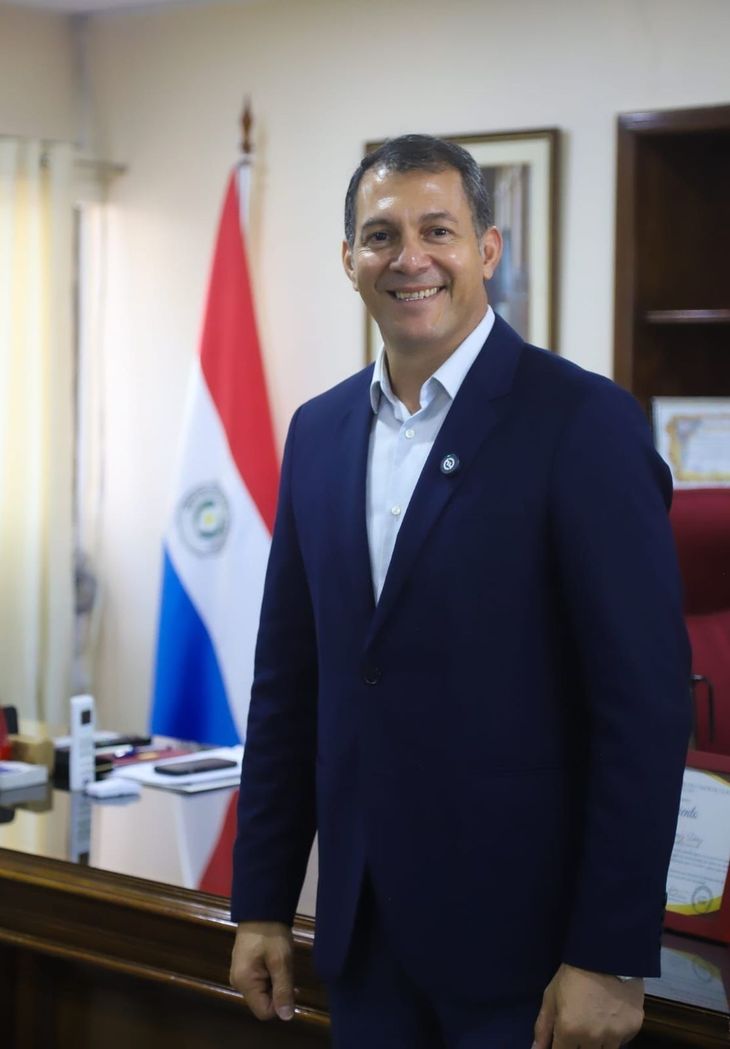The recent trade history between Paraguay and Argentina includes soybeans and derivatives, in addition to the relationship that exists in energy terms. However, 2024 was revealing for the productive sector in the neighboring country. In October, the Guaraní sent the first load of tomatoes, carrots and onions to our country. This commercial achievement was described as historic by the Government of Santiago Peña since it allows local producers to access one of the most important markets in the region.
In an exclusive interview, Scope spoke with Carlos Gimenez, Minister of Agriculture and Livestock of Paraguay, who highlighted that modernizing and training the smaller-scale agricultural subject is one of the main objectives of his management.
Journalist: From Argentina we see that Paraguay is a country that is growing strongly, with agriculture as an important pillar. Do we have a correct view?
Carlos Gimenez: It’s like that. Paraguay is well focused on being a global food producing country. It is what the President of the Republic, Santiago Peña, recommends to us and it is also what is needed to continue accompanying the most vulnerable, that sector that is not yet within the agribusiness circuit. For them we thought about reaching other markets, such as Argentina and even other Mercosur countries. But now that the agreement has been signed after 25 years with the European Union, why not also think big? We are talking about producers who can be within the important business circuit. Let them leave subsistence agriculture and move to commercial, market agriculture.
Q: Is this part of what you achieved by exporting vegetables to our country?
CG: We are very happy about that. Today, after 70 years, we are sending almost 1,800,000 kilos of tomatoes to Argentina. We have started with Córdoba, we also reached Buenos Aires, a little to Mendoza and also locating other areas that may be attractive. In the case of onion too, but for now they do not give the numbers for export. For next year we will surely give it another market within Mercosur because we want to produce with greater volume. But for that, the mentality and attitude of our people has to change a little. There is a range of opportunities if we look at the region.
Carlos Gimenez Minister of Agriculture Paraguay 2.jpg
Q: What has to change?
CG: We have to have competitive agriculture and we are achieving it, breaking some vices that producer associations or organizations had, which were used to giving benefits and welfare. Giving perks is not in our action plan, we want technical agriculture and the Government seeks to ensure that this technology reaches even the most vulnerable sector or those who cannot access credit. In this management we locate the groups that produce, but those that the state never contemplated. And an important change is felt because they no longer only look at the internal market but also the external one. We want our young people to get involved again, for which we have intervened heavily in agricultural schools, where our young people, who are children of farmers, are trained. There is no other way to be competitive, you have to incorporate technology and that means changing the way you work, which with young people is much easier.
Q: Is part of the work targeting young farmers?
CG: Producers throughout the world are aging, so we want agriculture to be another business alternative for young people. We support corporate agriculture, expansive agriculture, but we have to take care of that family agriculture, we have to take care that young people love the place where they are, where they grew up, but for that to happen we have to change. We have to give them tools because as a country we have many comparative advantages, we have water and land.
Q: Can they grow on productive surface?
CG: We can grow. We still have a long way to go to grow vegetables. There is enormous potential there. As I said, we must incorporate technology and get out of informality so that these farmers, who are thousands of them, with just a few hectares each, can access credit. But if Japan or Korea achieved it, we can do it too and that family farming must become an efficient productive unit with the support of our technicians. Obviously we deal with agroindustrial activities that are key to the economy, but our focus is on the smallest, because that is where social upheavals are generated. People came to this present because they are unprotected due to the lack of public policies. We see this because we have just carried out an agricultural census, to begin managing with numbers, with indicators and parameters.
Q:WhatWhat view do you have of Argentina, from a productive point of view?
CG: The change of government in Argentina helped us. We are sending products but we do not want it to be temporary. We do not want it to be a circumstance that comes from an internal issue.
We have to export and Argentina is an important market. We must take advantage of what we do in the Paraguayan Chaco, which today is in clear productive expansion and with enormous potential. We can grow and we are going to need some significant investments from the government to reach the people. We are conquering the world with the cotton produced by the Mennonite brothers, we are exporting dates, we have a lot to progress.
Q.: Why do you make a very important differentiation between extensive and intensive agriculture?
CG: I want to differentiate what corporate agriculture is, which absorbs very little labor. With family farming, the social impact is much stronger because many families are involved in filling a truck with 30,000 kilos of tomatoes that goes to Argentina. We are directing our actions to that sector that needs innovative practices. The other, corporate agriculture, is already established because it has technology and is at another level.
According to the last census we have 259,000 farmers in the rural sector. But there is also a high percentage of those who are rural residents who are not producers and must be cared for.
Source: Ambito
I am an author and journalist who has worked in the entertainment industry for over a decade. I currently work as a news editor at a major news website, and my focus is on covering the latest trends in entertainment. I also write occasional pieces for other outlets, and have authored two books about the entertainment industry.




